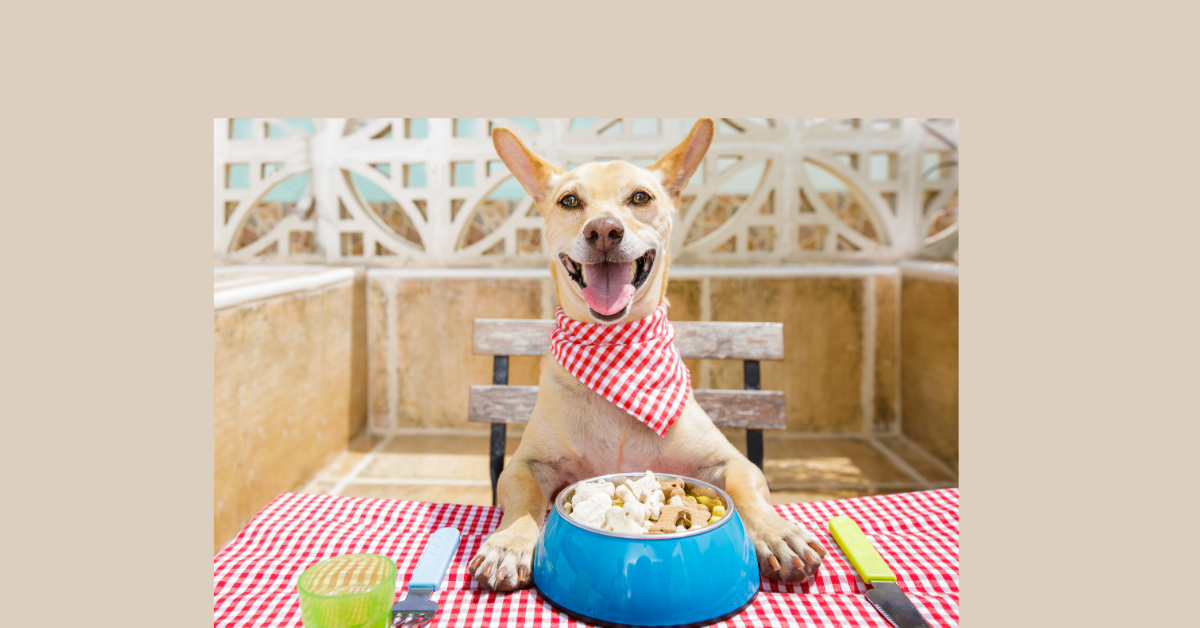Dogs are not just carnivores; they can also benefit from the addition of fruits and vegetables to their diet.
But before you start tossing carrots and apples into your furry friend’s bowl, it’s essential to understand how to do it safely and effectively.
In recent years, there has been a growing trend towards incorporating more natural and wholesome ingredients into our pets’ diets.
This includes adding fruits and vegetables, which can provide valuable nutrients and variety to their meals.
However, not all fruits and veggies are safe for dogs, and improper preparation can lead to digestive issues or even toxicity.
Table of Contents
Why Add Veggies and Fruits to Your Dog’s Meal?
Adding fruits and vegetables to your dog’s diet can offer several benefits.
Firstly, they provide essential vitamins, minerals, and antioxidants that can support your dog’s overall health and well-being.
Secondly, they add fiber, which can aid in digestion and regulate bowel movements.
Lastly, incorporating a variety of foods can prevent mealtime boredom and encourage your dog to eat a more balanced diet.
Understanding Your Dog’s Dietary Needs
Before adding any new foods to your dog’s diet, it’s crucial to understand their nutritional requirements.
Dogs are omnivores, meaning they can thrive on a diet that includes both animal and plant-based foods.
However, they still require a high protein content, so fruits and veggies should complement, not replace, their regular meals.
Selecting Safe and Nutritious Options
When choosing fruits and vegetables for your dog, opt for organic options whenever possible to minimize exposure to pesticides and other harmful chemicals.
Some safe options include carrots, apples (without seeds), blueberries, green beans, and sweet potatoes.
Avoid toxic foods like grapes, raisins, onions, and garlic at all costs.
Preparing Veggies and Fruits for Your Dog
The way you prepare fruits and vegetables for your dog can impact their digestibility and nutrient availability.
While some can be fed raw, others may require cooking to break down tough fibers and enhance flavor.
Additionally, be mindful of portion sizes to prevent overfeeding, especially for smaller breeds.
Incorporating Veggies and Fruits into Your Dog’s Diet
There are several ways to incorporate fruits and vegetables into your dog’s meals.
You can mix them directly with their regular food or use them as healthy treats throughout the day.
Just be sure to adjust their overall calorie intake accordingly to prevent weight gain.
Mixing with Regular Meals
One of the simplest ways to incorporate fruits and vegetables into your dog’s diet is by mixing them with their regular meals.
You can chop or puree fruits and veggies and mix them directly into your dog’s dry or wet food. This method allows your dog to enjoy the added flavors and textures while still receiving the essential nutrients from their regular diet.
When mixing fruits and vegetables with your dog’s meals, it’s essential to consider the portion size and balance.
Too much of a good thing can upset your dog’s stomach or lead to nutritional imbalances. Start with small amounts and gradually increase the quantity as your dog adjusts to the new additions.
Using as Treats
Another way to incorporate fruits and vegetables into your dog’s diet is by using them as healthy treats.
Instead of store-bought treats filled with artificial ingredients and preservatives, offer your dog small pieces of fresh fruits and vegetables as rewards for good behavior or during training sessions.
Not only are fruits and vegetables a healthier alternative to traditional dog treats, but they can also provide additional nutritional benefits.
For example, carrots can help clean your dog’s teeth and promote dental health, while blueberries are packed with antioxidants that support overall well-being.
When using fruits and vegetables as treats, be mindful of the calorie content and adjust your dog’s daily food intake accordingly.
Too many treats, even healthy ones, can contribute to weight gain and other health issues. Stick to small portions and use treats sparingly to avoid overfeeding.
Variety is Key
Just like humans, dogs appreciate variety in their diet. Rotate different fruits and vegetables regularly to keep mealtime exciting and prevent boredom.
This not only ensures that your dog receives a wide range of nutrients but also encourages them to eat a more balanced diet.
Experiment with different fruits and vegetables to see which ones your dog enjoys the most.
Some dogs may prefer crunchy veggies like carrots or cucumbers, while others may have a sweet tooth for fruits like apples or bananas. Pay attention to your dog’s preferences and tailor their diet accordingly.
Monitoring Your Dog’s Response
As you introduce new foods into your dog’s diet, keep an eye out for any adverse reactions.
Signs of digestive upset or allergic reactions may indicate that a particular food doesn’t agree with them. If in doubt, consult your veterinarian for guidance.
Common Mistakes to Avoid
Some common mistakes when adding fruits and veggies to your dog’s diet include giving them too much, feeding unsafe foods, or neglecting to properly wash or prepare them.
It’s also essential to avoid seasonings or additives that could be harmful to your dog.
FAQs ( Frequently Asked Questions )
-
Can I give my dog any fruits and vegetables?
No, some fruits and vegetables are toxic to dogs and should be avoided. Always research before introducing new foods.
-
How much fruits and veggies should I give my dog?
Portions should be small and balanced with their regular meals to avoid digestive upset or nutritional imbalances.
-
Can I give my dog cooked vegetables?
Yes, some vegetables may be more digestible and palatable when cooked, but ensure they are plain and not seasoned.
-
What if my dog doesn’t like fruits or veggies?
Some dogs may be picky eaters, but you can try gradually introducing new foods or incorporating them into homemade treats.
-
Should I consult my vet before adding fruits and veggies to my dog’s diet?
Yes, it’s always a good idea to consult with your veterinarian before making any significant changes to your dog’s diet.
Conclusion
Incorporating fruits and vegetables into your dog’s diet can be a nutritious and enjoyable experience for both you and your furry friend.
By understanding their dietary needs, selecting safe options, and preparing them properly, you can enhance your dog’s overall health and well-being.
Whether you choose to mix them with regular meals or use them as treats, be sure to monitor your dog’s response and adjust their diet as needed. With a little creativity and experimentation, you can provide your furry friend with a diet that’s both nutritious and delicious.





